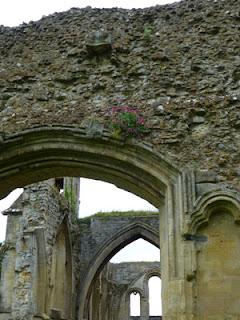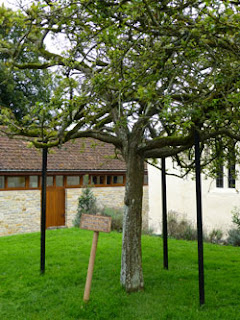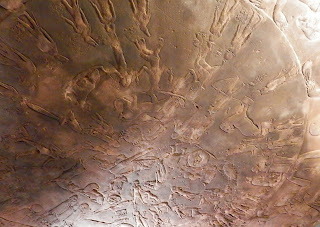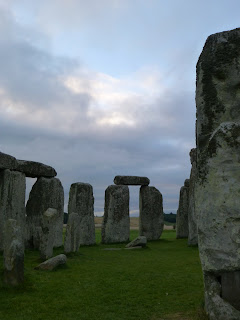Glastonbury Abbey
 |
| Glastonbury Abbey |
 |
| Glastonbury Town and Shops |
 |
| Location of Arthur's Tomb |
Off the main square is the entrance to Glastonbury Abbey, the ruins of a magnificent church and abbey grounds dating to about 700 AD., built and rebuilt over time on the site said to have been founded by Joseph of Arimathea about 60 AD. Legend also has it that to one side of the Lady Chapel, King Arthur and Guinevere were buried. The legends were forever woven together.
From the Abbey's website we learn:
"After the crucifixion of Jesus lore has it that Joseph of Arimathea
(who according to the Bible donated his own tomb for Christ's
interment after the Crucifixion) came to Britain, bearing the Holy
Grail - the cup used by Christ at the Last Supper and later by
Joseph to catch his blood at the crucifixion."
 |
| Abbey Walls |
 |
| Abbey Ruins |
"When Joseph landed on the island of Avalon, he set foot on Wearyall
Hill - just below the Tor. Exhausted, he thrust his staff into
the ground, and rested. By morning, his staff had taken root -
leaving a strange oriental thorn bush - the sacred Glastonbury Thorn."
 |
| Glastonbury Thorn Tree |
"For safe keeping, Joseph is said to have buried the Holy Grail just
below the Tor at the entrance to the Underworld. Shortly after he
had done this, a spring, now known as Chalice Well, flowed forth and
the water that emerged brought eternal youth to whosoever would
drink it."
A thorn tree still stands behind the Visitor's Center, said to be a descendant of the original tree.
The Lady's Chapel, dedicated to Mary, is the most intact of all the buildings that used to grace the site. Many of the support buildings are gone, although you can still see the outlines of the foundations in the ground.
 |
| The Lady Chapel |
The day I visited, very near the Autumnal Equinox, a group of women were chanting the rosary in unison at the altar on the bottom floor of the Lady Chapel. Their voices carried throughout the ancient structure, lending a hushed reverence to the experience, as if calling me back in time through the centuries.
To which Mary, I wondered, did they pray? Mary, the Mother? Mary Magdalene? In this place, the original Earth Mother's presence is so palpable, the Mother before time and organized religion. To me, their chanting signified reverence for the Feminine Divine, no matter which name we use to call to Her.
Perfect timing, as my next stop was the Goddess Temple off High Street.


Comments